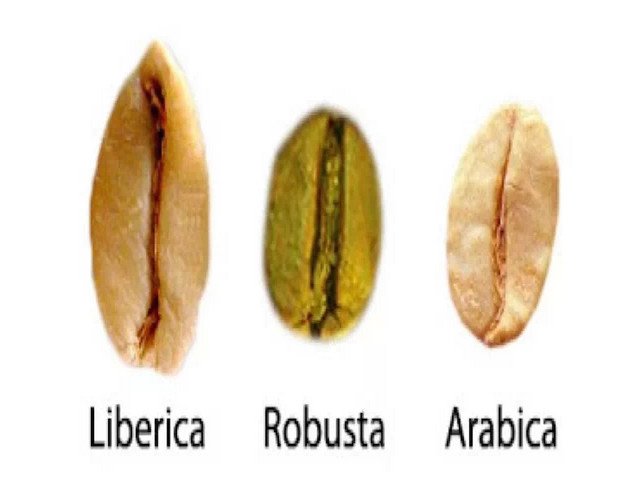Popular science | introduce you to coffee from Central American countries (part I)

There are so many varieties of boutique coffee in producing areas.
Are you worried about going to the cafe and not knowing how to do it?
Never mind!
Today, the editor will first lead you to the coffee producing areas of Central America.
Take you to find your favorite coffee.
El Salvador
Active volcanic activity brings mineral-rich volcanic ash to El Salvador, and the soil dominated by volcanic ash contains more minerals and less organic matter, so in order to maintain its geographical location and make up for the lack of organic matter, Salvadoran farmers will use the pulp residue of treated coffee beans or organic matter under coffee trees as fertilizer to make up for the lack of organic matter in the soil. Make the planting of coffee trees more able to produce coffee beans with harmonious taste.
El Salvador's most meaningful initiative is to introduce organic agriculture to the world, growing more than 150000 tons of organic coffee each year.
There are six major coffee producing areas in El Salvador, all of which are distributed in the alpine slopes or plateau areas covered with volcanic ash at an altitude of 1200 meters. November to April of the following year is the coffee harvest and harvest season.
Because coffee prefers mild climate, coffee trees in El Salvador are mainly planted in tall shade (shade grown coffee), in order to avoid excessive temperature and direct exposure to the sun, affecting the quality of coffee beans.
The coffee beans produced by it belong to Arabica species, mainly from Pacas and Bourbon brands, and belong to big beans with sweet taste and excellent flavor.
one
Production area introduction
Apeneca-Ilamatepec mountain area
Location: West of El Salvador
Palate: sweet, floral, fragrant. Chocolate, drupe, peach and cream flavors, with citrus acidity and exquisite taste, lasting after tasting
Planting altitude (m): 500-2365
Alotepec-Metapan mountain area
Location: North of El Salvador, on the border with Honduras
Palate: excellent aroma, floral flavor, with chocolate, citrus and special sour caramel sweet to neutralize, with a clear fruit flavor
Planting altitude (m): 1000-2000
El Balsamo-Quezaltepec mountain area
Location: the southern foothills of the coastal mountains of La Libertad province, El Salvador, about south of the cities of San Salvador and San Vincent. It extends westward from Armenia Canyon to La Paz, another province in the northwest.
Palate: the coffee in this area has a well-balanced taste, creamy flavor, excellent concentration, vanilla aroma and bright acidity, full of very supple taste
Planting altitude (m): 500-1960
Chichotepec Volcano area
Location: located in the central area of El Salvador in the city of Sao Vincent
Palate: fragrant, with floral aromas of orange and sweetness of chocolate
Planting altitude (m): 500-1000
Tecapa-Chinameca mountain area
Location: located in the city of San Miguel, between the Lempa River and the Grande River, sloping to the north to the central valley area and descending slowly to the south to the coastal area
Palate: very diverse taste, coffee concentration, aroma, acidity and sweetness are well balanced, with chocolate, ripe fruit flavor, and sweet taste of cantaloupe, apple and grape
Planting altitude (m): 500-2139
Cacahuatique mountain area
Location: located in the east of downtown Barrios, between San Miguel and Moraz á provinces, north from the Torola River Valley, that is, the mountains along the Honduran border, south in the Torola River Valley, east extending to the city of San Francisco Gotera
Palate: with delicate fruit juice flavor, excellent taste, strong coffee and almond aromas
Planting altitude (m): 500-1663
Nicaragua
Nicaraguan coffee is mainly produced in the central and northern part of the country, covered with volcanic ash and shaded by trees, resulting in high-quality Nicaraguan coffee, which has a mediocre, mild flavor and is suitable for comprehensive coffee. Shade planting is its characteristic, while coffee beans are washed and dried in the sun.
Nicaraguan coffee beans are larger than those of other countries. In particular, Maragogipe (a huge tree species of coffee beans called elephant beans) produced in Madagelba has a clear taste and excellent aroma, which has a round and soft texture, which is highly valued in the market.
one
Production area introduction
New Segovia Nueva Segovia
Location: cool in the northeast, with steep mountains and jungles
Palate: high acidity, short fruit, moderate sweetness, dark chocolate, cream, citrus, coconut, peach, raisin and cherry. The acidity of this kind of coffee is very close to that of mulberry
Planting altitude (m): 1500-2000
Malagasy Metagalpa
Location: northeast mountain area, cool climate
Palate: medium acidity, medium volume, high sweetness, fragrant flower aroma. It is both delicate and smooth, with unique flavors such as chocolate, caramel, fresh fruit, citric acid and so on. This kind of coffee feels smooth and soft.
Planting altitude (m): 1200-1500
Ginotte plus Jinotega
Location: northeast mountain area, cool climate
Palate: high acidity, good fruit quality, moderate sweetness, and well-balanced flavors of milk chocolate and raisins, plums, oranges, peaches, lemons and vanilla
Planting altitude (m): 1200-1500
Madriz Madriz
Palate: high acidity, short fruit, moderate sweetness and rich tulip aromas. It also contains a variety of fruit juice flavors such as grapefruit, peach, apple, vanilla, honey and cherry.
Estelli Estel í
Palate: moderate acidity, good fruit quality, moderate sweetness, peach, apricot and other flavors, and has the characteristics of foam. It is a kind of coffee with balanced quality and floral flavor.
to be continued
Important Notice :
前街咖啡 FrontStreet Coffee has moved to new addredd:
FrontStreet Coffee Address: 315,Donghua East Road,GuangZhou
Tel:020 38364473
- Prev

Popular science | introduce you to coffee from Central American countries (part two)
For the exchange of professional baristas, please pay attention to the coffee workshop (Wechat official account cafe_style). The latitude of Guatemala is about 15 degrees, because of the long mountains and great regional climate change, which has created the eight major coffee producing areas of the country, all located on the highland topography in the subtropical climate, with rich and stable rainfall and fertile volcanic ash soil.
- Next

Popular science | how coffee is made, a summary of several common ways to treat raw coffee and beans
Professional baristas Please follow the Coffee Workshop (Wechat official account cafe_style) it is well known that there are many ways to treat coffee beans, but do you know the difference between them? Well, today, the editor will give you some of the most common treatments for raw coffee beans. Sun treatment is a traditional method for the initial processing of coffee beans, currently in Ethiopia and Yemen.
Related
- Beginners will see the "Coffee pull flower" guide!
- What is the difference between ice blog purified milk and ordinary milk coffee?
- Why is the Philippines the largest producer of crops in Liberia?
- For coffee extraction, should the fine powder be retained?
- How does extracted espresso fill pressed powder? How much strength does it take to press the powder?
- How to make jasmine cold extract coffee? Is the jasmine + latte good?
- Will this little toy really make the coffee taste better? How does Lily Drip affect coffee extraction?
- Will the action of slapping the filter cup also affect coffee extraction?
- What's the difference between powder-to-water ratio and powder-to-liquid ratio?
- What is the Ethiopian local species? What does it have to do with Heirloom native species?

